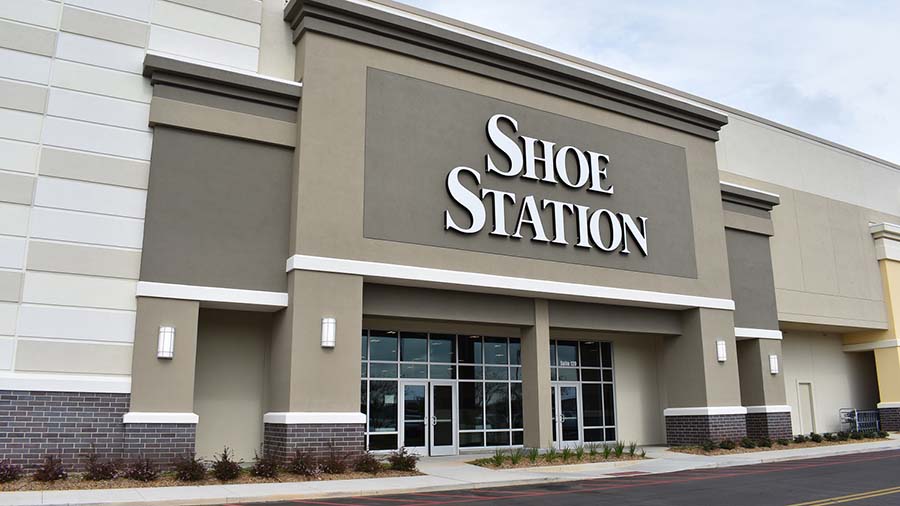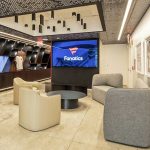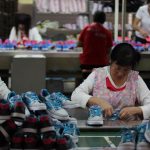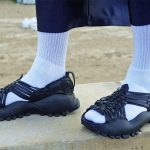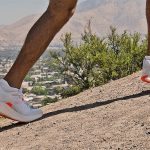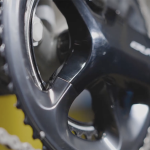In announcing plans to accelerate the rollout of Shoe Station, Mark Worden, Shoe Carnival’s president and CEO, told analysts that the Shoe Carnival locations, which the retailer has converted to premium Shoe Station concept, are seeing double-digit sales growth and accretive margins across affluent and rural markets.
“This isn’t just a regional success story limited to the Gulf states,” said Worden. “We’re seeing this performance in suburban markets, rural communities and even in areas with more diverse demographics. The data is compelling and provides us with the confidence to accelerate this transformation.”
As a result, Shoe Carnival announced that Shoe Station, based in the Southeast, is now expected to represent over 80 percent of the retailer’s store fleet by March 2027, up from a previous target of 51 percent.
Today, there are 70 Shoe Station stores, representing 16 percent of the fleet, with plans calling to end fiscal 2025 with approximately 120 Shoe Station stores, representing 28 percent of the fleet. For the current year, it plans to complete 75 re-banners after previously predicting between 50 and 75 stores during fiscal 2025.
By July 2026, at least 51 percent of Shoe Carnival’s current store fleet will operate as a Shoe Station. Said Worden, “I believe this expansion gives us the scale necessary to deliver total company comparable store growth starting in Q3 2026, as the strength and scale of Shoe Station will more than offset the ongoing challenges we expect to face with the Shoe Carnival banner.”
The re-banner acceleration comes as Shoe Station grew sales by 4.9 percent for the first quarter, driven by the re-banner approach, which grew sales in the low double digits. By comparison, the Shoe Carnival banner contributed a net sales decline of 10.0 percent.
“The continued Shoe Station sales growth, including comp growth in the quarter, is in stark contrast to the family footwear industry and Shoe Carnival trends, where both had comparable store declines in the high-single digits during Q1,” said Worden. “This creates an exciting national growth opportunity to scale up Shoe Station store counts to drive the overall corporation sales and profit growth impact.”
He said Shoe Station’s outperformance has been seen across diverse markets.
In a more affluent trade area skewing older on the Atlantic coast of Florida, a Shoe Station re-banner of an underperforming Shoe Carnival store in a new market far from any other Shoe Station store and outperformed stronger than expected. Worden said, “On paper, the store is prototypical of one we expect to hit at least a double in baseball terms, but we hit a home run here with sales growth over 20 percent, strong AUR growth from a superior branded assortment and accretive margins. Our action step from this learning is that the organization will continue re-bannering and expanding in markets like this one on the East Coast.”
At an average-performing Shoe Carnival location in Tennessee, over an hour from any major city in a typical rural community demographic, a re-bannered Shoe Station saw sales grow by over 20 percent compared to the prior year, also with higher AUR and accretive margins. Worden said, “Our analysis of local competition and available product assortments in that area pinpointed a gap that Shoe Station’s unique merchandise mix could fill. And our prediction was accurate.”
In a rural market in Alabama, the results of a re-bannered Shoe Station were even stronger. Said Worden, “These home runs in rural markets where the brand has awareness and also where it does not give us confidence to action, re-bannering our Shoe Carnival stores across rural markets in America.”
The biggest surprise was a re-banner in a “lower income, highly diverse market” in Georgia outside a major city that was expected to show flat results but delivered healthy gains. Said Worden, “This lower income customer also responded very strongly to the new assortments just as well as the response in rural Tennessee and the affluent Florida beach town. This encouraging result could prove a game changer and how wide the scope is for Shoe Station customer acquisition as we go national. Shoe Station can consistently exceed industry benchmarks in diverse rural markets that are not affluent.”
In sum, Worden said Shoe Station is outpacing the industry and Shoe Carnival quarter-after-quarter for over two years now, with the Shoe Station re-banners exceeding prior Shoe Carnival banner sales by over 20 percent during the last five quarters since beginning the re-banner rollout while producing increased AURs and accretive product margins in markets in more affluent and suburban markets.
At the same time, Shoe Station is finding success in rural America, new markets, and coastal America and is showing early signs of growth in diverse lower-income areas outside major cities. Said Worden, “With these results in hand, it is crystal clear that Shoe Station is the future of our organic growth and the future of our store base. The superior performance in regions quarter-after-quarter versus Shoe Carnival and the industry have provided us the customer data and the on-the-ground confidence to accelerate and increase our ambition with this approach.”
Worden added that vendors and other key stakeholders are showing “great enthusiasm and support” for the re-bannering initiative. He noted that Shoe Carnival may convert all its stores to the Shoe Station concept, but it still needs to test the concept further in urban markets that serve lower-income consumers.
“The answers aren’t clear today, but I believe it is prudent to explore this topic and plan to begin testing in urban doors by early 2026,” said Worden. “We anticipate the potential for meaningful internal synergies and efficiencies if we were to learn that the Station banner can better meet all of our store needs. I look forward to sharing more about our organic growth approach after back to school.”
The announcement of the acceleration comes as Shoe Carnival reported first quarter 2025 results were better than expected, with profits outperforming expectations by approximately 10 percent. Shoe Carnival reiterated its forecast for the year, with the retailer so far not feeling a major impact from the tariff disruption.
Said Worden, “I may be a contrarian on this next statement, but I’m starting to feel cautiously optimistic about back-to-school, as we have a compelling assortment in hand and our product costs have not skyrocketed.”
Worden noted, as previously shared, that he does not anticipate Shoe Carnival or the family footwear industry will return to profitable sales growth in the near term, based on the current external conditions and soft consumer confidence. However, implicit in Shoe Carnival’s guidance range is a moderating sales decline trend in the back half of the year, primarily driven by Shoe Station momentum and expansion, compelling back-to-school assortments, and encouraging progress on trade negotiations.
Total company sales in the first quarter slumped 7.5 percent to $277.7 million. Comparable store sales dropped 8.1 percent, of which an estimated 1 percent was due to lost sales resulting from the re-banner strategy.
Athletic Outperforms Other Footwear Categories
All broader categories declined in the quarter, but the top performer was athletic footwear, which accounted for 46 percent of revenue and delivered a mid-single-digit decline. Patrick Edwards, CFO, said athletic category performance reflected “the relative resilience of our consumer’s emphasis on casual and active lifestyles.” Shoe Station’s athletic business grew low-teens during the quarter, with strength in performance running styles.
In women’s non-athletic footwear, which accounted for 24 percent of the retailer’s business in the quarter, comps declined in the mid-teens compared to the same period last year, with the Shoe Carnival banner’s comp decline nearly doubling that of Shoe Station. Within the Shoe Station banner, women’s non-athletic was driven by stronger performance, primarily in dress shoes.
Men’s non-athletic footwear, which represented 7 percent of sales, declined in the low single digits compared to Q1 last year. Similar to women’s, Shoe Station outperformed, achieving low singles comp positive growth, supported by Shoe Station’s expanded branded assortment within casual footwear and higher price points.
Children’s footwear, which accounted for 18 percent of the business in the quarter, experienced a low-teens decline, with particular challenges stemming from reduced spending among low-income consumers. Shoe Station’s kids’ business declined only low singles, significantly outperforming the company average.
“What’s particularly notable across all these categories is the consistent pattern of Shoe Station outperforming Shoe Carnival regardless of category,“ said Edwards. “This reinforces our confidence in the re-banner strategy as a driver of future growth. We believe the combination of upgraded store environments, enhanced brand presentation and higher service levels that characterize the Shoe Station format creates a compelling value proposition that resonates across multiple footwear categories.”
Q1 Profits Decline on Re-Banner Costs
First quarter gross profit margin eroded 110 basis points to 34.5 percent. A 50-basis-point increase in merchandise margin was offset by a 160-basis-point decline in buying, distribution, and occupancy costs, primarily due to deleverage from lower sales. SG&A expenses decreased by approximately $500,000, as costs associated with the banner strategy were more than offset by the timing of selling expenses from other stores. As a percent of sales, SG&A increased to 30.2 percent from 28.1 percent a year ago.
Net income in the quarter fell 42.2 percent to $9.3 million, or 34 cents per share, from $17.3 million, or 63 cents, a year ago. The re-banner strategy investment, including store closing costs, amortization of new store construction costs, a four- to six-week store closure period through each store’s grand opening, customer acquisition costs, and other related expenses, is estimated to have impacted earnings by approximately 15 cents per share.
Worden added that Shoe Carnival is accelerating its re-banner push “from a position of financial strength“ with growing cash reserves and no debt. He further noted that Shoe Carnival is open to potential M&A opportunities.
Given the uncertain trade climate, Worden said Shoe Carnival made a deliberate decision to maintain elevated inventory levels, investing early in key products to support back-to-school and holiday selling amid reports that the industry may face shortages later this year.
Worden said, “We’ve secured key products at a favorable cost, ensuring we’ll be in stock for our customers while potentially benefiting from margin expansion if costs rise. Importantly, we’ve managed to increase inventory while simultaneously growing our cash position, a testament to our disciplined financial management.”
Finally, Worden said that while industry-wide pressures continue to affect Shoe Carnival’s lower-income consumers, “encouraging signals“ are being seen at Shoe Station. Worden said, “Shoe Station’s consistently superior performance demonstrates that our premium offering resonates with customers who remain willing to spend on quality branded footwear. The early success of our re-banner initiative in diverse markets suggests there is broader appeal for the Shoe Station concept than we initially anticipated.”
Outlook
Shoe Carnival reiterated its guidance for the year, based on first-quarter EPS exceeding market expectations, momentum in its re-banner strategy, and some improvement in macroeconomic uncertainties.
Guidance for the year calls for:
- Net Sales: $1.15 billion to $1.23 billion, representing a range of down 4 percent to up 2 percent versus Fiscal 2024;
- GAAP EPS: $1.60 to $2.10 per share, inclusive of the re-banner strategy’s initial year costs, down from $2.68 a year ago;
- Gross Profit Margin: 35 percent to 36 percent compared with 34.6 percent a year ago;
- SG&A: $350 million to $360 million, up from $337.6 million the prior year; and
- Capital Expenditures: $45 million to $60 million.
Image courtesy Shoe Station/Shoe Carnival, Inc.

